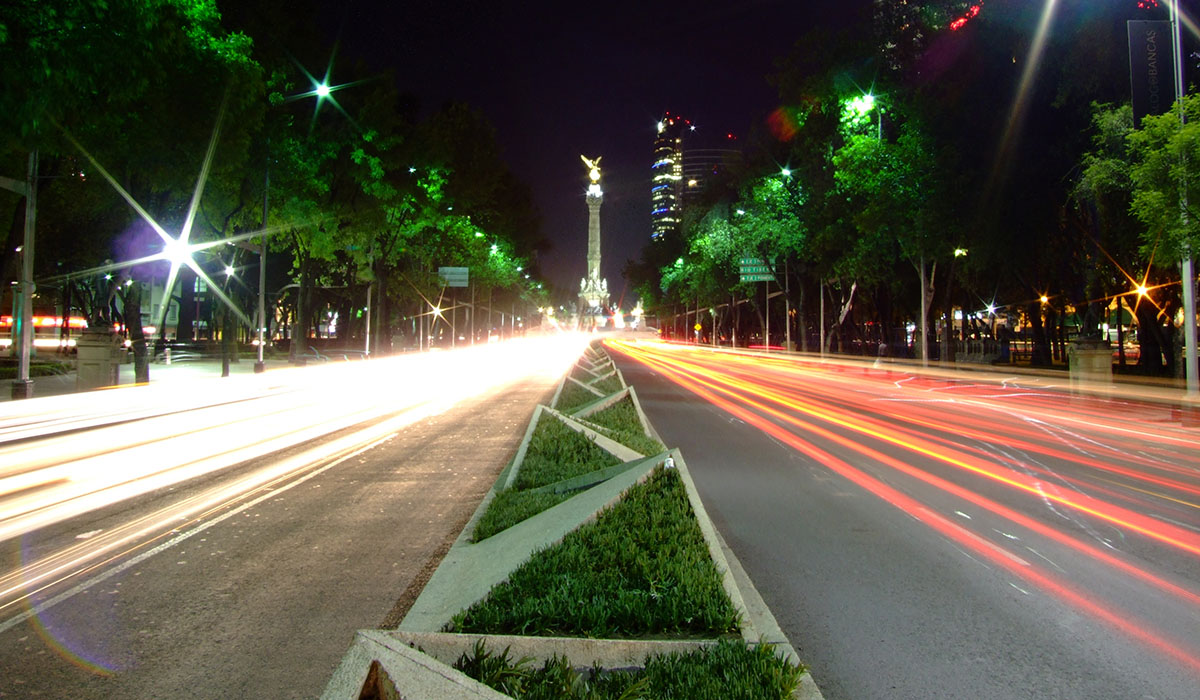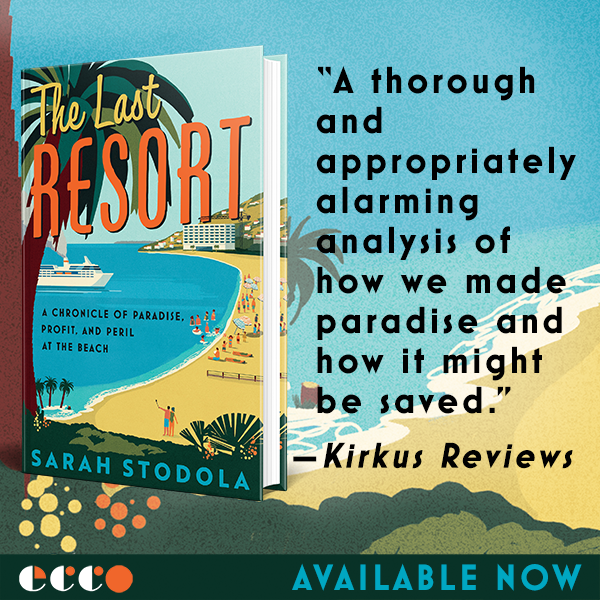In unfamiliar cities, I tend to be a walker. I love the particular relationship it carves out between me, who doesn’t belong there, and the place that of course, belongs exactly there. I love the way walking tips the power balance just a little, emboldening me to navigate this new city as I please, to potentially discover things that no one or guide book would have taken me to. I’ll admit that I like walking in strange places also partly out of timidity—if you walk you have to navigate neither cab drivers, ticket machines, nor the general confusion of an unfamiliar public transportation system.
Sometimes, though, an unfamiliar city has other ideas, as I would learn on my first trip to Mexico City.
My initiation into the car-dominated reality of Mexico City started in the taxi to my hotel from the airport, where the first thing the driver said to me was, “Mucho trafico,” which it would turn out is akin to touching down at LAX only to be told that it’s sunny out. Next, he told me that it’s not uncommon for a commute in this city to take three hours each way. People eat dinner in their cars. They start and end relationships. They nap.
I hadn’t considered the traffic in Mexico City until that ride, and I had plenty of time during it to do just that. The driver managed my expectations every time I asked if we were almost there. I took a couple of hours.
Later I considered it further as I tried to get to Chapultepec Park, Mexico City’s version of Central Park, just across the street from my hotel in the tony Polanco neighborhood. Traffic lights have been erected sparingly here, and the streets can be harrowingly wide with lanes. My strategy of choice at this moment involved standing next to a local, pretending to watch the approaching cars while keeping my eyes’ attention squarely on the unsuspecting person, then when he suddenly pounced into action, I did the same, shadowing him until we’d cleared all the lanes of traffic.
*
The catch 22 of this place is that despite the 6 million cars on the road here, resulting in the worst traffic in the world (depending on which study you consult), a car is often still the best way to get where you’re going.
Say that, as a visitor to this city, you want to see both the buzzy Museuo Soumaya in the Nuevo Polanco neighborhood and the house where Frida Kahlo and Diego Rivera lived, in the Coyoacan neighborhood on the south side of the city. Most visitors consider both of these attractions must-sees, and you are likely no different. They lie about nine miles away from each other, but there is no direct public transportation route to get from one to the other—to take it, you’d need to board at least one bus, likelt two, plus a train, all of which are likely to be packed beyond their intended capacity, and you’d still have to spend half an hour walking. Alternately, you could order an Uber and if traffic falls in your favor, be door to door in 30 minutes. (Although traffic is unlikely to fall in your favor.)
I ordered an Uber, had it drop me off at Leon Trotsky’s house, also now a museum, then later walked the 7 minutes to Frida Kahlo’s house (the two house museums combine for a great afternoon outing, by the way). The ride took just over an hour, traffic not exactly making things seamless, and cost me about $6.50 USD. It felt like I’d chosen the best of the sub-optimal options.
That on these types of outings in Mexico City I would mostly sit in an Uber and not a taxi is notable, and typical. As of 2016, there were 50,000 Uber drivers in Mexico City, a number that has likely increased since then, as the service has become integral to life in Mexico City. The service has provided a welcome alternative to taxis, which operate in a confusing system and historically can be dangerous, especially for solo women. Uber screens drivers here carefully, has strict standards for cars to qualify for the “fleet,” and enables riders to know who their drivers are. I heard that after Uber arrived, the parents in the upper classes—a group especially vulnerable to kidnappings in Mexico City—started letting their teenagers go out at night, knowing they had a safe ride home. Parents can order an Uber for their kids and track the trip home via GPS.
On the other hand, Uber hasn’t done anything to alleviate the traffic problem in Mexico City. And it hasn’t helped the people most challenged by the public transportation system. Those who live on the edges of Mexico City are known to spend as much as 40 percent of their salaries just getting to and from work in the city center, and between four and six hours every day. $6.50 for an hour-long trip seems downright cheap when you’re coming from New York City, like I was, but it’s not viable on the average Mexican’s monthly salary of $843 USD.
*
From the Kahlo House, I wandered around Coyoacan, a fantastic area–and walkable, once you’re there!–with its charming main square, bohemian vibe, and offerings of food and drink. After a long wander, I eventually found a café with wifi and ordered a glass of wine. Just as I finished up and ordered an Uber, it started to rain. Hard. I’d sit with the Uber driver in that car for the next hour and change, crawling from Coyoacan back to my hotel in Polanco. Like all Uber drivers in Mexico City, he offered me a bottle of water as we started the trip. Later, as we crawled through the many, many streets of the city, he offered me chocolate. I declined it, but by this time we’d forged a camaraderie, me via my stumbling Spanish and him via speaking slowly to accommodate it.
The water is making it slower, he said in Spanish.
What water?
The rain. Lucky for me, I know the words for both water and rain.
The windows started to fog and he rolled his down, which didn’t help, so I rolled down mine. This approach was no match for the clash of the climates, inside vs. out. Do you mind if I turn on the air conditioner, he asked. I told him esta bien.
“Por fin,” he said as we turned into the hotel. Finally.
“Por fin,” I echoed and we both chuckled.
He stopped the car at the curb, insisted on opening the door for me, and offered me his hand, which I took. Muchas gracias, hasta luego, and so after two hours getting to know each other, the lives of myself and Miguel diverged again forever.
Feature image by Sam Kelly via Flickr Commons.






